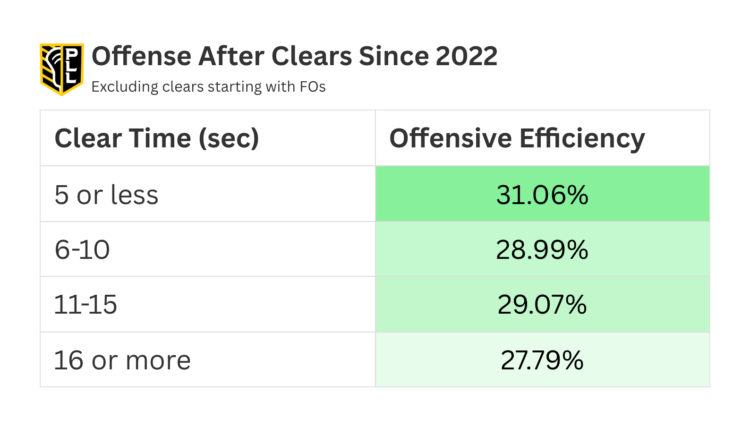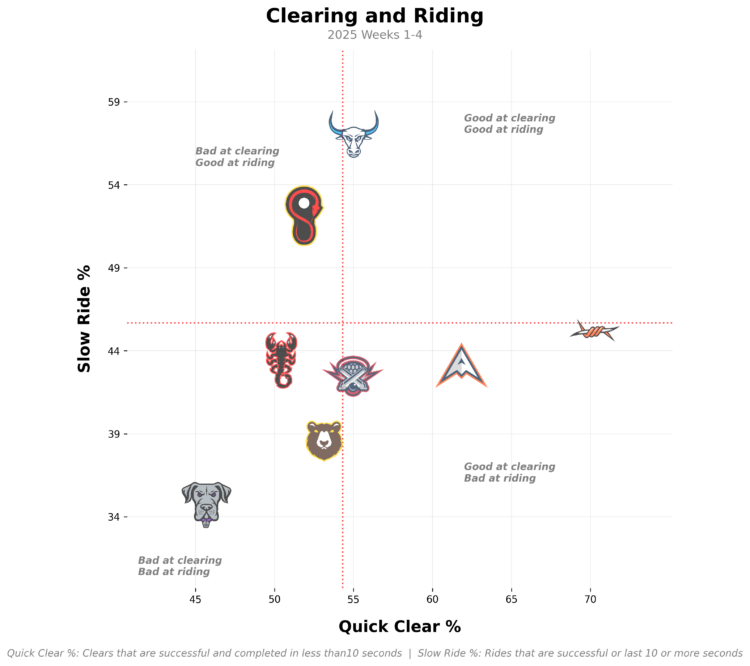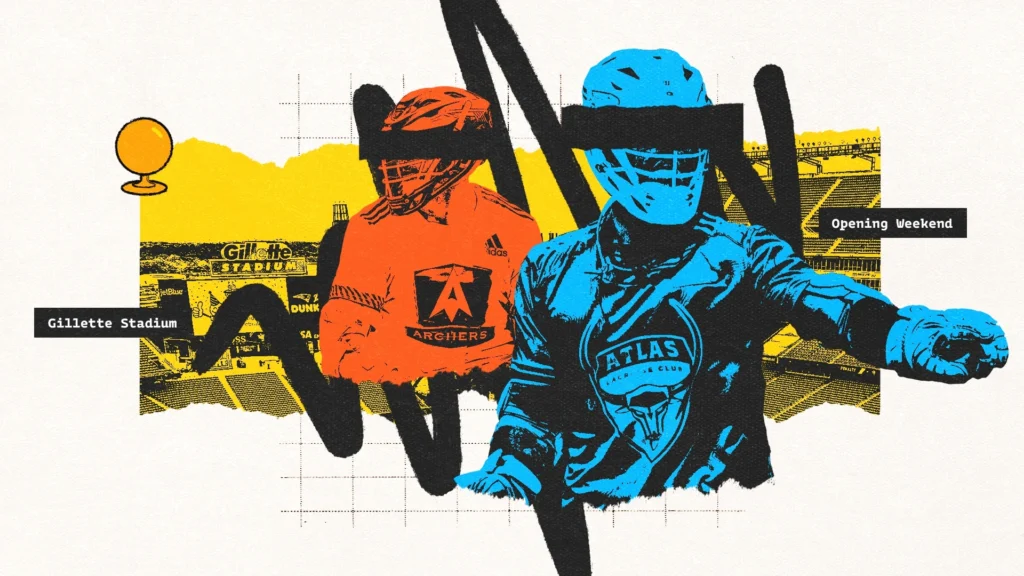Clearing is often overlooked in professional lacrosse. While it’s a massive point of emphasis at the youth, high school and college levels — sometimes consuming entire practices and deciding the outcome of games — it seems to fade into the background at the pro level.
Anyone who’s played at those earlier levels probably remembers extensively preparing for a 10-man ride, or maybe has watched a college team fall apart because it couldn’t execute a clean clear. Notre Dame’s recent back-to-back NCAA titles were built on the back of suffocating rides from the Kavanagh brothers and surgical clearing from goalie Liam Entenmann, who quarterbacked a unit that cleared at about 90% each season.
But in the PLL? Teams clear at roughly 98%. Compare that to the NCAA, where clear rates were 85% (D-I), 83% (D-II) and 80% (D-III) last season. In high school, I’d wager it’s around 50–75%, depending on the level.
At first glance, it seems like clearing just isn’t a factor in the PLL. And in some ways, that’s true. Long poles and goalies at this level are so elite with the ball in their stick that failed clears are rare. But here’s the twist: It’s not whether you clear the ball that matters. It’s about how quickly you clear it.
With a 52-second shot clock (compared to 80 seconds in the NCAA), the time spent getting the ball across midfield can eat into up to a third of your offensive set. The faster you clear, the more time your offense gets to work, and the more likely they are to score.








